Casting into Summer: An Early Season Fly Selection Guide

Summer is here, signaling this exhilarating season of fly fishing and offering enthusiasts with abundant opportunities to enjoy this dynamic sport. Longer days and rising temperatures trigger significant changes in aquatic ecosystems, profoundly influencing fly selection for anglers of all skill levels. Rivers and lakes become hubs of activity, with prolific insect hatches drawing fish into feeding frenzies. This abundance and diversity of insect life is key to guiding your fly choices during these warmer months. Let's explore some essential considerations for selecting the most effective summer flies and share valuable tips to enhance your fly fishing experience during this exciting season.
Insect Life Cycle
The most basic rule of fly selection is matching the hatch—the process of choosing a fly that best resembles the insects that fish are feeding on. With a surge in the number of insects during the summer, trout, in particular, become selective eaters, making your choice of fly significantly essential.
Knowing the life cycle of local insects becomes an important part of your fly fishing strategy. Many insects, such as mayflies, caddisflies, and stoneflies, hatch in the warmer months. Imitating these insects in their different life stages (nymph, emerger, adult, spinner) will greatly enhance your fishing success.
Mastering Early Summer Fly Fishing Techniques & Tactics
Summer brings unique conditions that call for specific techniques to maximize your success on the water. Let's dive into some key strategies that will elevate your fly fishing game this season.
-
Understanding Water Temperature: Early summer is characterized by rising water temperatures, which play a critical role in fish behavior. Trout, for instance, are most active in water temperatures between 50 and 68 degrees Fahrenheit. Use a stream thermometer to gauge the water temperature, allowing you to strategically time your fishing. Early mornings and late evenings are often most productive, as temperatures are more optimal and insect hatches are abundant.
-
Matching the Hatch: Early summer sees a surge in insect hatches. Mayflies, caddisflies, and stoneflies make their presence known during this period, and "matching the hatch" becomes a crucial technique. This strategy involves choosing a fly that closely resembles the insects that fish are actively feeding on. This will require keen observation of your environment, identifying the prevailing insects, and selecting the appropriate flies.
-
Dry Fly Techniques: Dry fly fishing is a popular method in early summer. This technique involves casting a fly that floats on the surface of the water, imitating an adult insect. The key here is presentation. Cast upstream of a feeding fish, allowing your fly to drift down naturally with the current. Aim for drag-free drifts—your fly should float naturally, just like a real insect would.
-
Nymphing Tactics: Nymph fishing can be incredibly productive in early summer. Nymphs are the immature stage of aquatic insects and are a significant part of a fish’s diet. Cast your nymph upstream and let it drift downstream, mimicking the natural journey of a nymph through the water column. Frequently, a strike indicator can help detect subtle takes.
-
Use Terrestrial Patterns: With the warmth of early summer, terrestrial insects like ants, beetles, and grasshoppers become more active and often fall into the water, providing an additional food source for fish. Having a selection of terrestrial flies and knowing when to use them can provide an edge. Typically, these patterns are most effective in windy conditions or near overhanging vegetation.
- Streamer Fishing: Streamer fishing can be particularly effective in the early morning or late evening. Streamers imitate larger food sources like minnows and leeches. Cast your streamer across the current and retrieve it with a series of short, jerky pulls to imitate a wounded or fleeing baitfish. This technique can provoke aggressive strikes from predatory fish.
Fly Selection for Early Summer
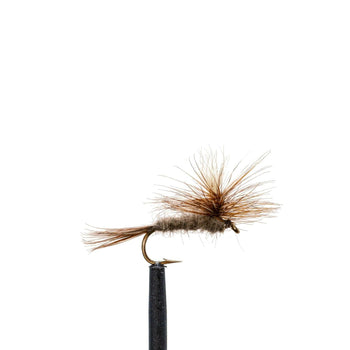 |
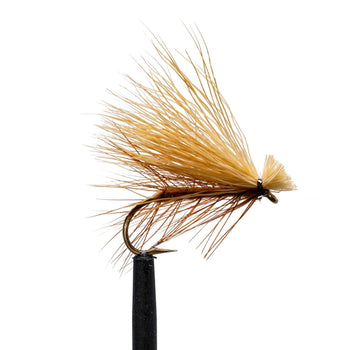 |
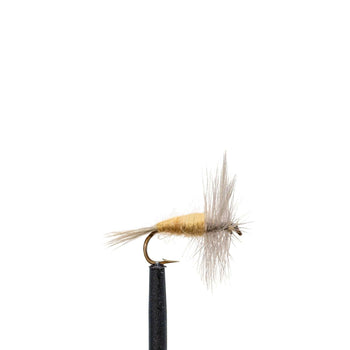 |
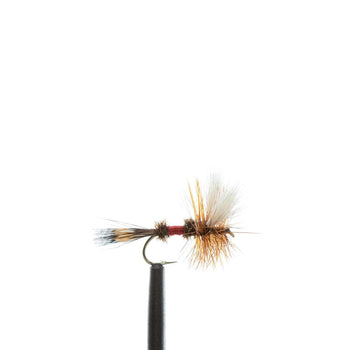 |
| Parachute Adams | Elk Hair Caddis | Pale Morning Dun | Royal Wulff |
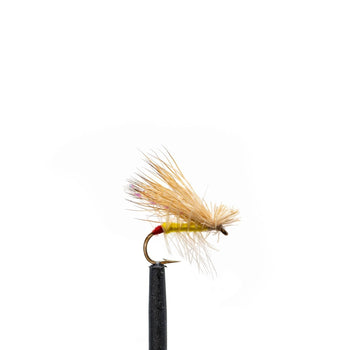 |
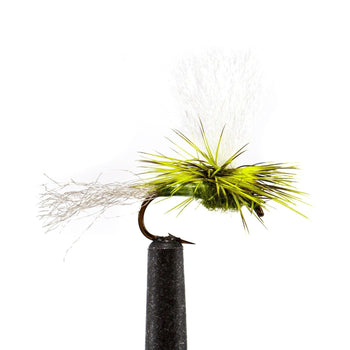 |
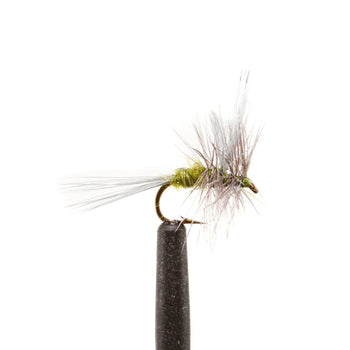 |
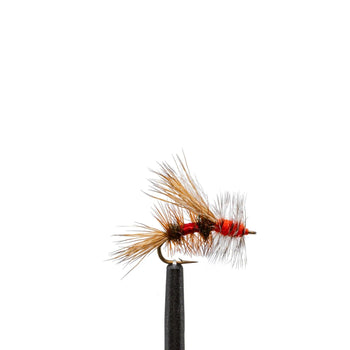 |
| Yellow Sally | Green Para Drake | Blue Winged Olive | Royal Stimulator |
Dry Flies
- Parachute Adams: The Parachute Adams is a versatile dry fly known for its high visibility and effectiveness in imitating a variety of mayflies. To use it effectively in early summer, cast upstream of feeding fish and allow it to drift naturally on the surface.
- Elk Hair Caddis: The Elk Hair Caddis is a staple dry fly that mimics adult caddisflies. Its buoyant elk hair wing helps it float well on the water. It is ideal for riffles and faster water where caddisflies are abundant; cast upstream and let it drift naturally, occasionally giving it a slight twitch to mimic the movement of a struggling caddis.
- Pale Morning Dun: The Pale Morning Dun (PMD) is an effective dry fly that mimics the pale-colored mayflies common in early summer. It works best during morning hatches; cast to rising fish and allow a drag-free drift.
- Royal Wulff: The Royal Wulff is a highly visible attractor pattern that works well in a variety of conditions. Its bushy construction makes it float well in rough water. Cast it to likely fish-holding areas and let it drift naturally.
- Yellow Sally: The Yellow Sally is a dry fly that mimics small yellow stoneflies. It is best used in clear water with moderate flow. Cast it upstream and let it drift naturally or with a slight twitch to attract fish.
- Green Para Drake: The Green Para Drake is excellent for imitating large green drakes, which hatch in early summer. It performs well in slow to moderate currents; cast it upstream and let it drift naturally to entice feeding fish.
- Blue Winged Olive: The Blue Winged Olive is a small dry fly that imitates olive-colored mayflies. Use it during overcast days and in slower currents by casting upstream and letting it drift naturally.
- Royal Stimulator: The Royal Stimulator is a large, bushy dry fly that works well as a stonefly or hopper imitation. Cast it near the banks and let it drift naturally, adding occasional twitches.
When fishing with dry flies, observe the water for rising fish or insect activity. Match the size, color, and silhouette of the natural insects with your chosen dry fly. Cast upstream or across the current, allowing the fly to land gently on the water. Mend the line to achieve a drag-free drift and monitor for any signs of fish taking the fly. Stay attuned to the natural movements of insects on the water's surface and adjust your presentation accordingly.
SHOP ALL DRY FLIES

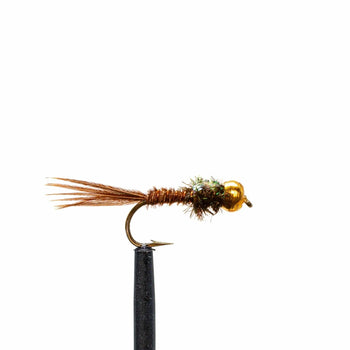 |
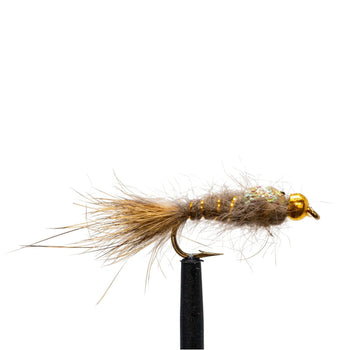 |
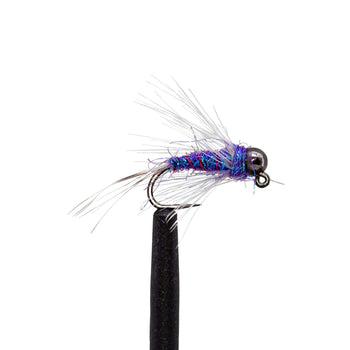 |
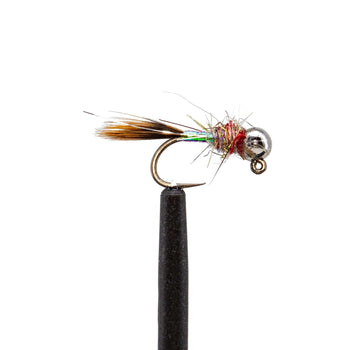 |
| Beadhead Flashback Pheasant Tail | Beadhead Hare's Ear Flashback | Tungsten Bead Duracell Jig | Tungsten Bead Rainbow Warrior Jig |
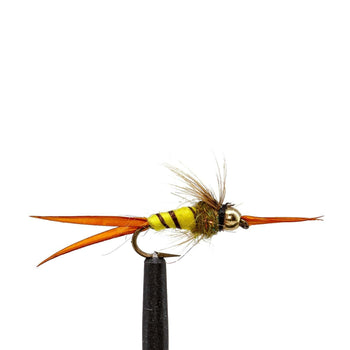 |
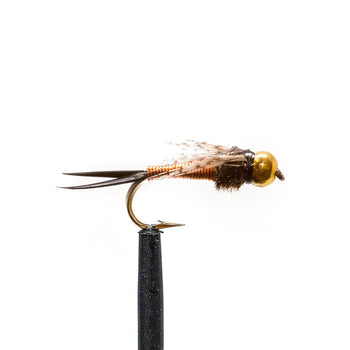 |
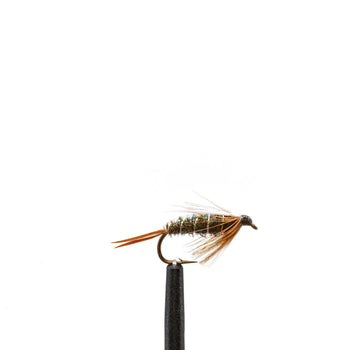 |
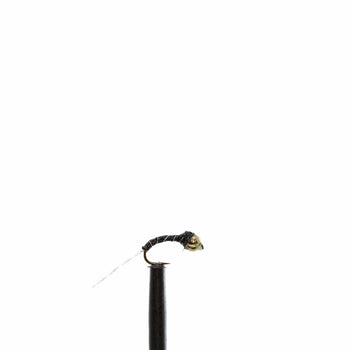 |
| Beadhead Micro Golden Stone | Copper John | Prince Nymph | Zebra Midge |
Nymphs
- Beadhead Flashback Pheasant Tail: The Beadhead Flashback Pheasant Tail is a productive nymph that imitates a wide range of aquatic insects. Use it in early summer by casting upstream and allowing it to drift through pools and runs.
- Beadhead Hare's Ear Flashback: The Beadhead Hare's Ear Flashback is a versatile nymph that resembles many mayfly nymphs. It works well in various water conditions; cast it upstream and let it drift near the bottom.
- Tungsten Bead Duracell Jig: The Tungsten Bead Duracell Jig is effective in fast currents due to its heavy tungsten bead. Cast it upstream and let it sink quickly, drifting along the bottom to mimic a nymph's natural movement.
- Tungsten Bead Rainbow Warrior Jig: The Tungsten Bead Rainbow Warrior Jig is a flashy nymph that attracts fish in clear water. Cast it upstream and let it drift along the bottom, especially in deep pools.
- Beadhead Micro Golden Stone: The Beadhead Micro Golden Stone is a smaller nymph that imitates stonefly nymphs. Use it in fast-flowing water by casting upstream and allowing it to drift naturally.
- Copper John: The Copper John is a heavy nymph that sinks quickly and imitates a variety of aquatic insects. Cast it upstream and let it drift along the bottom, especially in faster currents.
- Prince Nymph: The Prince Nymph is a versatile pattern that imitates various nymphs. Cast it upstream and let it drift naturally near the bottom to attract feeding fish.
- Zebra Midge: The Zebra Midge is a small, effective nymph that works well in clear water. Cast it upstream and let it drift along the bottom to imitate midge larvae.
When fishing with nymph patterns, it's crucial to match the size, color, and behavior of the natural nymphs in the water. Use an appropriate indicator, weight, or leader setup to achieve the desired depth and drift. Focus on presenting the fly near the bottom, as that's where nymphs are most active. Pay attention to the movements and behaviors of fish to determine the most effective nymphing technique and adjust your presentation accordingly. By mastering the art of nymph fishing, you can tap into the abundant food sources below the surface and increase your chances of enticing strikes from trout and other freshwater fish.
SHOP ALL NYMPHS

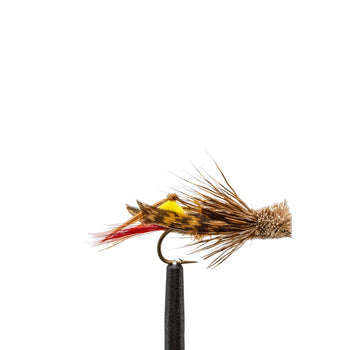 |
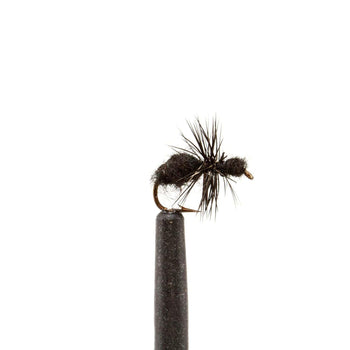 |
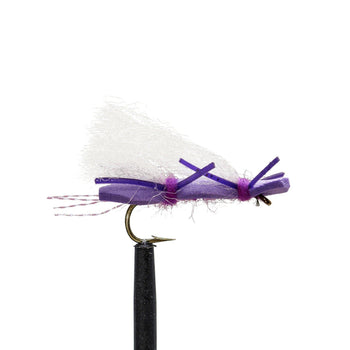 |
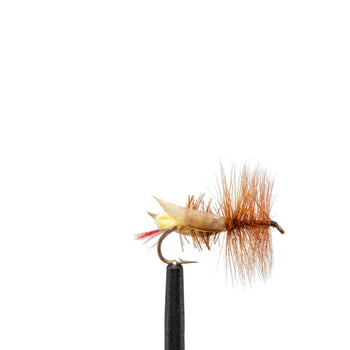 |
| Dave's Hopper | Black Ant | Purple (Barney) Chubby Chernobyl | Joe's Hopper |
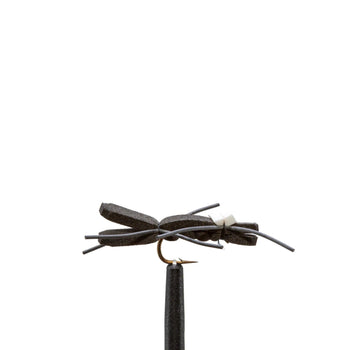 |
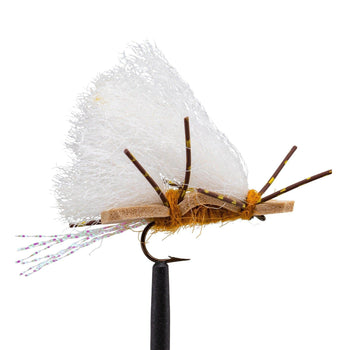 |
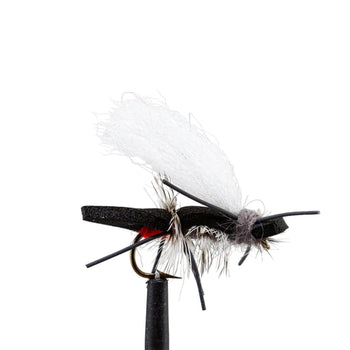 |
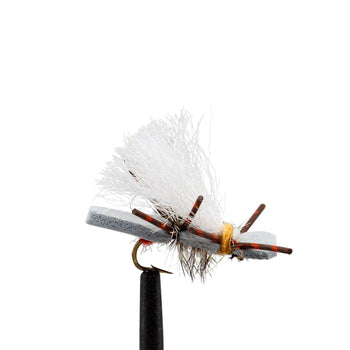 |
| Chernobyl Ant Black | Tan/Copper (The Mule) Chubby Chernobyl | Black (Vader) Micro Chubby | Gray/Amber (007) Micro Chubby |
Terrestrials
- Dave's Hopper: Dave's Hopper is a classic terrestrial fly that mimics grasshoppers, making it ideal for summer fishing near grassy banks. Use it in windy conditions by casting upstream and letting it drift naturally. Adding occasional twitches can mimic the erratic movement of a struggling grasshopper, enticing fish to strike.
- Black Ant: The Black Ant is an effective terrestrial fly that mimics ants, which often fall into the water during summer. Use it in clear, calm waters by casting upstream and allowing it to drift naturally. Its simple yet realistic profile makes it a reliable choice for targeting trout feeding on terrestrial insects.
- Purple (Barney) Chubby Chernobyl: The Purple Chubby Chernobyl is a buoyant terrestrial fly that mimics large beetles and hoppers. To use it effectively, cast near the banks and let it drift with the current. Its high visibility and buoyancy make it perfect for early summer fishing, especially in fast or turbulent water.
- Joe's Hopper: Joe's Hopper is a realistic grasshopper imitation that works well in grassy areas during summer. Cast it near the banks and let it drift naturally. Its lifelike appearance and movement can attract fish feeding on terrestrial insects, making it a reliable choice for summer fishing.
- Chernobyl Ant Black: The Chernobyl Ant Black is an effective terrestrial fly for imitating large ants and beetles. Use it near the banks or in slower water, casting upstream and letting it drift naturally. Its buoyant design and high visibility make it a great choice for targeting surface-feeding fish.
- Tan/Copper (The Mule) Chubby Chernobyl: The Tan/Copper Chubby Chernobyl is a versatile terrestrial that works well in a variety of conditions. Cast it near the banks and let it drift naturally or with slight twitches to mimic the movement of a struggling insect. Its buoyancy and durability make it ideal for early summer fishing.
- Black (Vader) Micro Chubby: The Black Micro Chubby is a smaller terrestrial that mimics ants and beetles. Cast it upstream and let it drift naturally, especially near overhanging vegetation. Its smaller profile makes it effective in clear water and for targeting selective fish.
- Gray/Amber (007) Micro Chubby: The Gray/Amber Micro Chubby is a smaller terrestrial pattern that works well in clear water. Cast it upstream and let it drift naturally, especially near overhanging vegetation. Its subtle color and realistic profile make it a great choice for wary fish in early summer.
SHOP ALL TERRESTRIALS

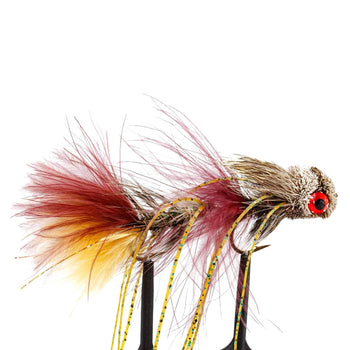 |
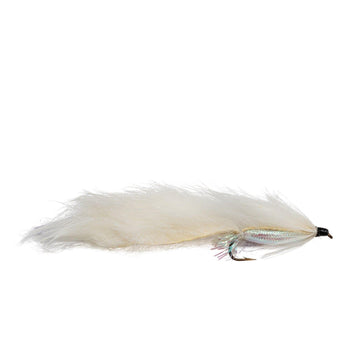 |
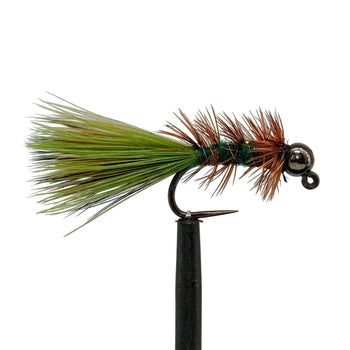 |
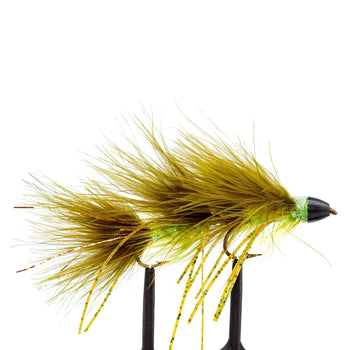 |
| Natural Sex Dungeon | White Zonker | Tungsten Bead Thin Mint Jig | Olive Peanut Envy |
 |
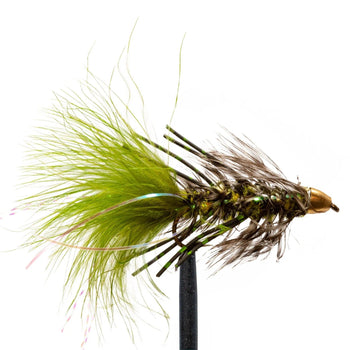 |
 |
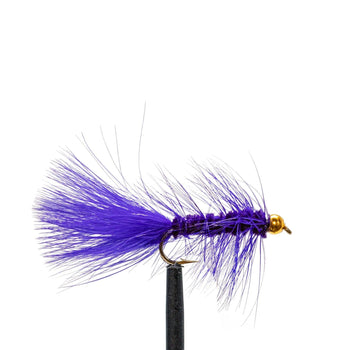 |
| Muddler Minnow | JJ Special Black/Olive Conehead | Chartreuse Clouser Minnow | Beadhead Purple Wooly Bugger |
Streamers
- Natural Sex Dungeon: The Natural Sex Dungeon is a highly effective streamer for imitating large baitfish, making it a top choice for early summer fly fishing. To use it, cast across the current and retrieve with short, jerky pulls to mimic a wounded baitfish. This technique provokes aggressive strikes from predatory fish.
- White Zonker: The White Zonker is a flashy streamer that works well in clear water. Its lifelike movement makes it irresistible to fish. Cast it across the current and retrieve with short, sharp pulls to imitate a fleeing or wounded baitfish, enticing strikes from aggressive predators.
- Tungsten Bead Thin Mint Jig: The Tungsten Bead Thin Mint Jig is a versatile streamer that sinks quickly due to its tungsten bead. Use it in fast currents by casting upstream and letting it drift along the bottom. Retrieve it with short strips to imitate a sculpin or baitfish, which can trigger strikes from lurking trout.
- Olive Peanut Envy: The Olive Peanut Envy is a productive streamer that mimics small fish. It works well in various water conditions. Cast it across the current and retrieve it steadily or with occasional pauses to provoke aggressive strikes from predatory fish.
- Muddler Minnow: The Muddler Minnow is a classic streamer that imitates small fish and sculpins. Its buoyant head makes it ideal for fishing in fast water. Cast it across the current and retrieve with varied speeds to attract predatory fish. It can also be fished as a surface fly by stripping it quickly.
- JJ Special Black/Olive Conehead: The JJ Special Black/Olive Conehead is a versatile streamer that works well in different water conditions. Cast it across the current and retrieve with varied speeds to imitate a fleeing baitfish. Its conehead helps it sink quickly, making it effective in deep pools.
- Chartreuse Clouser Minnow: The Chartreuse Clouser Minnow is an effective streamer for clear water. Its bright color and realistic movement attract fish. Cast it across the current and retrieve with quick, jerky motions to mimic a wounded baitfish, triggering strikes from predatory fish.
- Beadhead Purple Wooly Bugger: The Beadhead Purple Wooly Bugger is a popular streamer that mimics leeches and baitfish. Its beadhead helps it sink quickly. Cast it upstream or across the current and retrieve with short strips to create lifelike movement, making it attractive to fish in various water conditions.
Remember, streamer fishing techniques can vary depending on the specific conditions and the behavior of the fish. Experiment with different retrieval speeds, pauses, and depths to find the most effective presentation for each streamer fly.
SHOP ALL STREAMERS
Summer fly fishing is as much about observation as it is about the casting. Pay attention to what's happening around you - observe the insects and the behavior of the fish. Don't be afraid to switch flies and techniques if something's not working.
Gear up for a successful early summer fly fishing adventure with Jackson Hole Fly Company. Get out there and enjoy the bounty that nature offers. Happy Fishing & Tight Lines!
SHOP THE SUMMER FLY COLLECTION
RELATED ARTICLES:
- How to Choose the Right Size Fly Fishing Leader & Tippet
- Exploring 6 Key Fly Categories & Effective Patterns
- Spring Fly Guide: Discover the Most Effective Patterns & Techniques
- Maximizing Your Fly Fishing Success: Why You Should Buy Flies in Bulk
- Essential Fly Fishing Knots: 10 Key Ties for Angling Success







